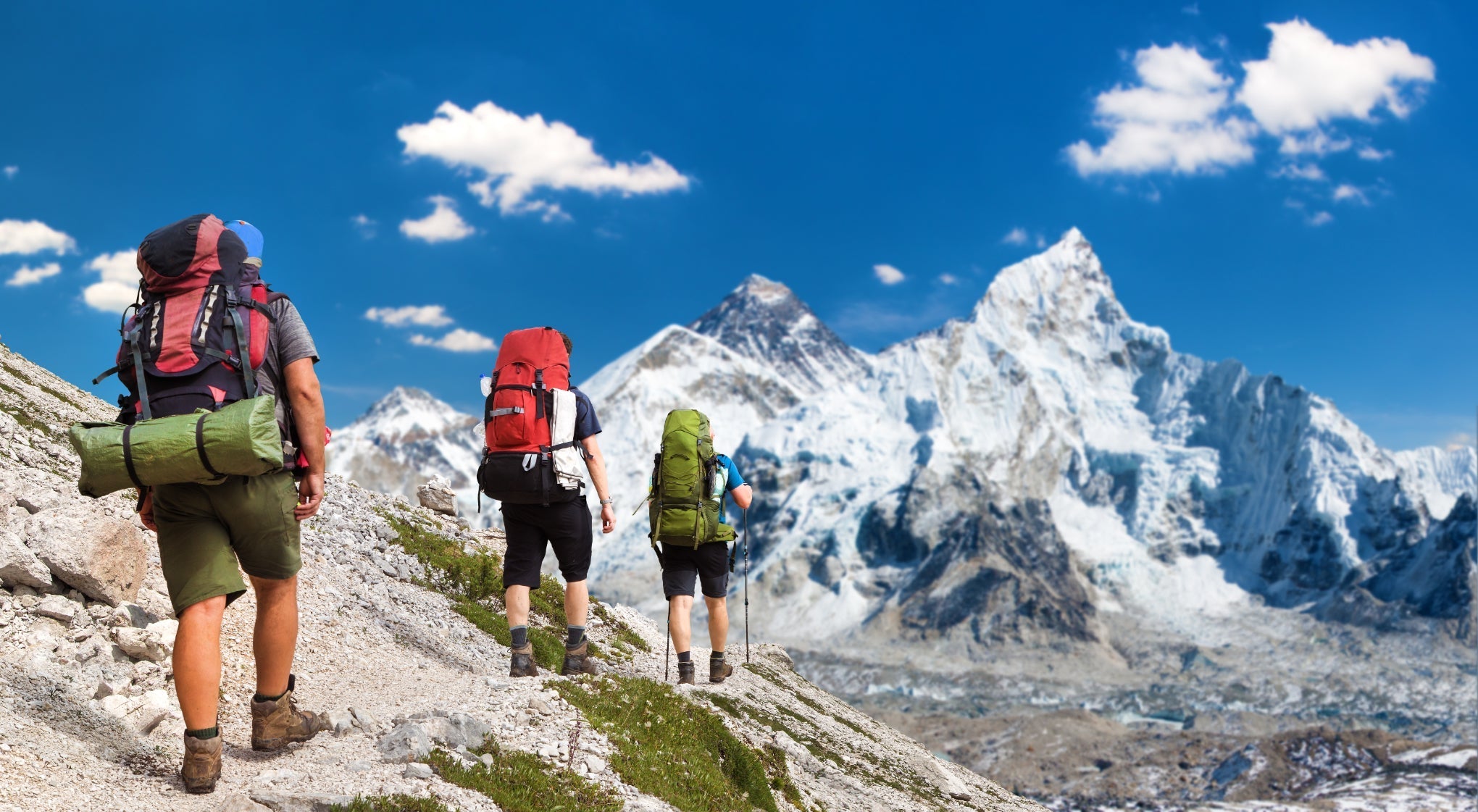
3 adventure challenges to train for this spring
Is 2025 the year you tackle an epic outdoor adventure? If you want to tick off a major mountain or classic hike later this year, you need to start training soon. There are tons of challenges to choose. Here’s our pick of the bunch – grab your ruckpack and get started!
Best outdoor adventures to train for in 2025
Whether you're a beginner looking for your first real challenge or an experienced adventurer seeking your next conquest, we’ve picked 3 brag-worthy routes (ranging from easier to most epic). Each one requires at least 16 weeks of dedicated training with proper equipment, including weighted training to build the strength and endurance you'll need on your journey.
Adventure 1: The Fan Dance – the military endurance test
What is it?
The Fan Dance is a special forces test march across the Brecon Beacons in Wales. The 24km route takes in Pen y Fan….twice. This tough but doable route has been used to test the mental and physical endurance of British Special Forces candidates for decades – and you can try it, too. We’ve written about the legendary Fan Dance before, so check out this blog if you want more reading.
Where is it?
Brecon Beacons National Park in Wales, UK.
How to do it?
There are organised Fan Dance events throughout the year, or you can tackle the route independently. The standard route involves going up Pen y Fan from the Storey Arms, down the other side, turning around, and doing it all in reverse. The classic Fan Dance is the load bearing category (with a weighted rucksack + your food and water – rucksack weight is 35lbs for men, 25lbs for women). You can also do the clean fatigue category which means carrying a small pack with basic provisions. The rules state that you can use a Military Bergen pack or civilian rucksack, not a plate-loaded weighted ruck pack to do the Fan Dance – but that doesn’t mean you can’t use a weighted ruck pack for your training.
How to train for The Fan Dance
16-week training plan:
• Weeks 1-4: 5km rucks 3 x a week, carrying 10% of your bodyweight in a ruck
• Weeks 5-8: increase to 10km hikes with 15% of your bodyweight, add hill training
• Weeks 9-12: increase to 15km hikes with 20% bodyweight, focus on terrain similar to Brecon Beacons
• Weeks 13-16: do 2 x 20km+ hikes weekly with full event weight, include successive days of training to build resilience
Key features:
• Elevation gain: Approximately 886m (2,907ft)
• Challenging terrain with steep climbs and descents
• Unpredictable Welsh weather conditions
What you need to know:
The Fan Dance isn’t just a physical challenge. The weather conditions can change rapidly, making navigation more difficult. Make sure your training works up to carrying the full weight, and be sure to train in all possible weather conditions.
Who should do The Fan Dance
Ruckers, hikers, and outdoor adventurers looking for their first serious endurance challenge. Perfect if you’ve got some hiking experience and want a historically significant challenge without going overseas.
Adventure 2: Ben Nevis – Britain’s tallest challenge
What is it?
Ben Nevis is a classic British mountaineering challenge – it’s the highest mountain in the British Isles at 1,345 meters (4,413 ft). The standard route is pretty straightforward but definitely demanding, especially if you’re carrying weight. We’ve blogged about doing Ben Nevis as a first timer here if you fancy a read.
Where is it?
The Scottish Highlands, near Fort William.
How to do it?
Most people take the Mountain Track (formerly called the Tourist Path) which is well-maintained. If you want more of a challenge, of you’ve done Ben Nevis before, consider the more technical CMD Arête.
How to train for Ben Nevis?
14-week training plan:
• Weeks 1-4: regular hill walks of 8-10km with 15% bodyweight in your ruckpack
• Weeks 5-8: steeper terrain and longer 12-15km hikes with 20% bodyweight in your pack
• Weeks 9-11: add strength training focusing on legs and core, maintain weighted hikes with added elevation
• Weeks 12-14: at least 3 practice climbs on mountains of 700-1000m elevation with full pack weight
Key features:
• Significant elevation gain in a single climb
• Scottish mountain weather, which can be severe even in summer
• Breathtaking views across the Highlands on clear days!
What you need to know:
Ben Nevis is not to be underestimated - rapidly changing weather and steep sections make it a risky thing to take on. You’ll need good navigation skills, proper mountaineering equipment even in summer months. Train with a weighted pack as prep for carrying all your essentials and safety gear.
Who should do Ben Nevis
Hikers with solid experience who are ready to take on a symbolic British landmark and want to tackle higher elevations.
Adventure 3: Everest Base Camp - the ultimate high-altitude challenge
What is it?
Base camp doesn’t mean basic! The trek to Everest Base Camp is a high-altitude journey through the Himalayan mountains that has to be done in stages, culminating at 5,364 meters (17,598 ft) at the foot of the world's highest peak.
Where is it?
Khumbu region of Nepal, starting from Lukla.
How to do it?
Most trekkers join organized expeditions with guides and porters, though independent trekking is possible. The standard route takes 12-14 days, allowing for proper acclimatization.
How to train for Everest Base Camp
16-week training plan:
• Weeks 1-4: build base fitness with 10km weighted hikes (7-10kgs) 3 x weekly
• Weeks 5-8: increase to 15km hikes with 11-14kgs, add back-to-back training days
• Weeks 9-12: focus on elevation gain with at least 600m elevation per hike
• Weeks 13-16: at least 2 multi-day hikes with full pack weight, practice walking at slower paces for extended periods
Key features:
• Two weeks of trekking at increasing altitudes
• Consecutive days walking 8-10 miles a day
• Challenges include endurance, altitude sickness, and nutrition
What you need to know:
Altitude sickness is a serious risk that requires acclimatisation – it’s difficult to train for it 100% properly. Logistical preparation for Everest Base Camp includes permits, flights, equipment, and potentially medication. Rucking with weight during training builds the strength needed to handle the physical demands at altitude where everything feels more difficult.
Who should do Everest Base Camp?
Everest Base Camp is now joke – don’t let the “base camp” fool you into thinking this is easy. This is for experienced adventure seekers ready for a life-changing experience. Everest Base Camp requires financial investment, time commitment, and physical training, but you’ll be rewarded with one of life’s most iconic trekking experiences.
Ready for your 2025 outdoor adventure?
This is exactly the right time of year to start training for a 2025 outdoor adventure, so load up your ruckpack and get out there. Check out the Force Fitness range for ruckpacks, weighted bests, and weighted plate carriers – adventure is calling!

















